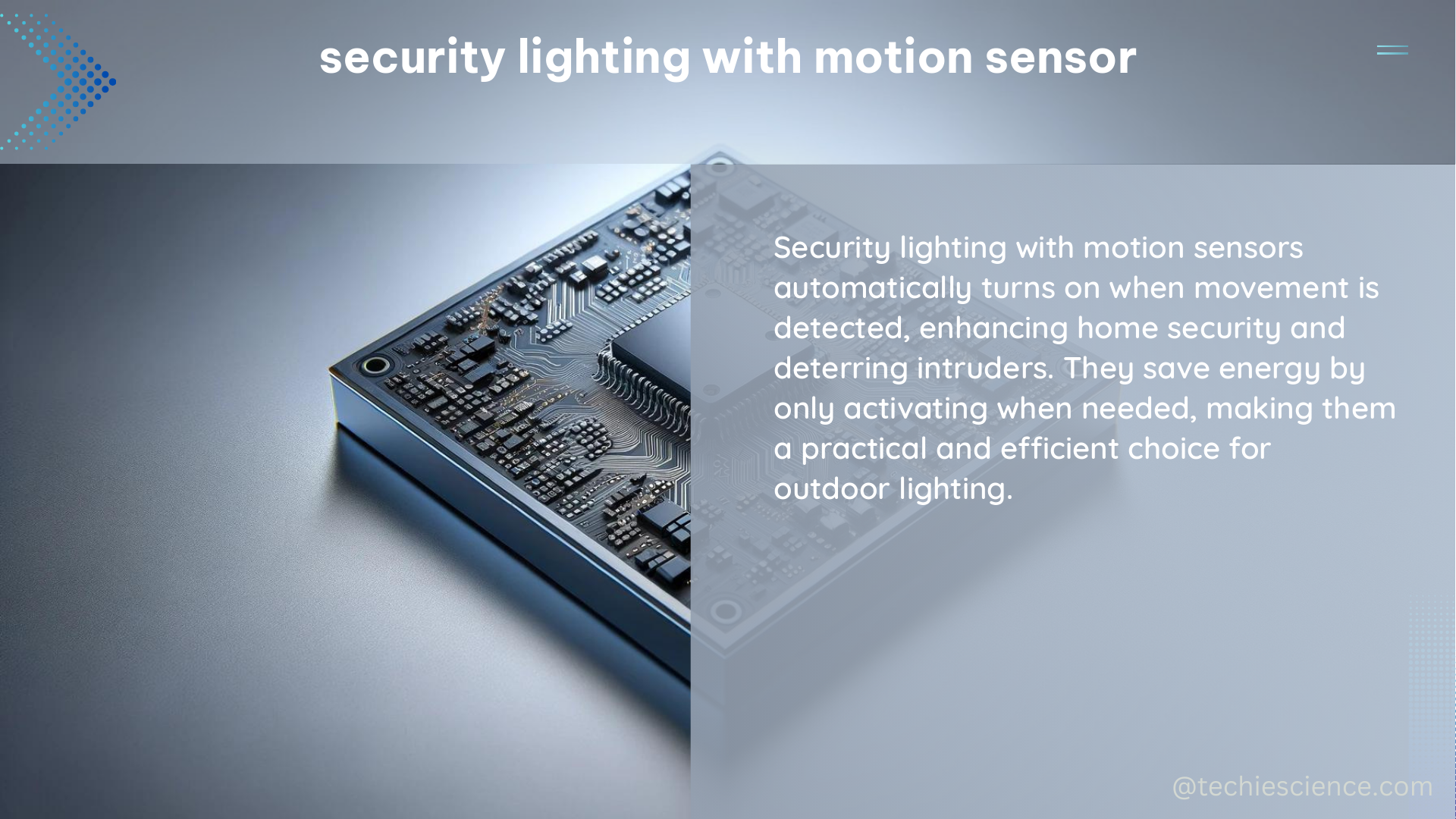Security lighting with motion sensors is a crucial component of any comprehensive home or commercial security system. These systems are designed to automatically activate lights when motion is detected, providing an effective deterrent against intruders and enhancing the overall safety and security of a property. In this comprehensive guide, we will delve into the technical specifications, performance metrics, and practical considerations of security lighting with motion sensors to help you make an informed decision for your specific needs.
Technical Specifications of Security Lighting with Motion Sensors
Detection Range
The detection range of a motion sensor is the maximum distance at which it can detect movement. This is typically measured in feet or meters and can vary significantly depending on the sensor’s technology and design. High-quality motion sensors can have a detection range of up to 100 feet (30 meters) or more, ensuring comprehensive coverage of the desired area.
Field of View
The field of view (FOV) of a motion sensor refers to the angle at which it can detect movement. This is typically measured in degrees and can range from narrow, focused angles of around 30 degrees to wide, panoramic angles of up to 360 degrees. The choice of FOV will depend on the specific layout and requirements of the installation site.
Response Time
The response time of a motion sensor is the time it takes for the sensor to activate the connected lights after detecting movement. This is typically measured in milliseconds or seconds and can be an important factor in ensuring a timely and effective response to potential intruders. High-performance motion sensors can have response times as low as 0.1 seconds.
Sensor Technology
Motion sensors can utilize a variety of technologies, each with its own advantages and disadvantages. Common sensor technologies include passive infrared (PIR), microwave, and dual-technology (PIR + microwave) sensors. Each type has its own unique detection capabilities, sensitivity, and performance characteristics that should be considered when selecting the appropriate sensor for your security lighting system.
Power Consumption
The power consumption of the security lighting system, including the motion sensor and connected lights, is an important consideration, especially for outdoor or remote installations where access to power may be limited. High-efficiency LED lights and low-power motion sensors can help minimize the overall power draw and reduce energy costs.
Brightness and Illumination
The brightness of the security lights, measured in lumens, is a crucial factor in ensuring effective illumination and deterrence. Brighter lights, in the range of 1,000 to 5,000 lumens or more, can provide a more visible and imposing presence, while also improving visibility and safety in the surrounding area.
Operating Temperature Range
The operating temperature range of the motion sensor and security lights is an important consideration, especially for outdoor installations that may be exposed to extreme weather conditions. High-quality components can typically withstand temperatures ranging from -40°C (-40°F) to 60°C (140°F) or more, ensuring reliable performance in a variety of climates.
Practical Considerations for Security Lighting with Motion Sensors

Placement and Positioning
The placement and positioning of the motion sensor and security lights are critical for optimal performance. Factors to consider include the layout of the property, potential obstructions, and the desired coverage area. Proper placement can help ensure that the sensor can effectively detect movement and activate the lights as needed.
Integration with Security Systems
Many security lighting systems with motion sensors can be integrated with larger home or commercial security systems, allowing for centralized control, monitoring, and automation. This integration can provide additional layers of security and convenience, such as remote access, notifications, and integration with other security devices.
Maintenance and Upkeep
Regular maintenance and upkeep of the security lighting system, including the motion sensor and connected lights, are essential for ensuring long-term performance and reliability. This may include cleaning the sensor, checking for any damage or wear, and replacing batteries or components as needed.
Environmental Considerations
Environmental factors, such as weather conditions, vegetation, and wildlife, can impact the performance of security lighting with motion sensors. Careful consideration of these factors during the planning and installation process can help ensure the system functions as intended and minimizes the risk of false triggers or malfunctions.
Conclusion
Security lighting with motion sensors is a powerful tool in enhancing the overall security and safety of your property. By understanding the technical specifications, performance metrics, and practical considerations, you can make an informed decision and select the right system to meet your specific needs. Whether you’re looking to protect a residential property, a commercial building, or a remote facility, this comprehensive guide will provide you with the knowledge and insights to make the most of your security lighting with motion sensor investment.
Reference:
- Sensing and Sensor Fundamentals – SpringerLink https://link.springer.com/chapter/10.1007/978-1-4302-6014-1_2
- NUREG-1959 “Intrusion Detection Systems and Subsystems https://www.nrc.gov/docs/ML1111/ML11112A009.pdf
- Transit Security Design Considerations Final Report November 2004 https://www.transit.dot.gov/sites/fta.dot.gov/files/docs/ftasesc.pdf

The lambdageeks.com Core SME Team is a group of experienced subject matter experts from diverse scientific and technical fields including Physics, Chemistry, Technology,Electronics & Electrical Engineering, Automotive, Mechanical Engineering. Our team collaborates to create high-quality, well-researched articles on a wide range of science and technology topics for the lambdageeks.com website.
All Our Senior SME are having more than 7 Years of experience in the respective fields . They are either Working Industry Professionals or assocaited With different Universities. Refer Our Authors Page to get to know About our Core SMEs.